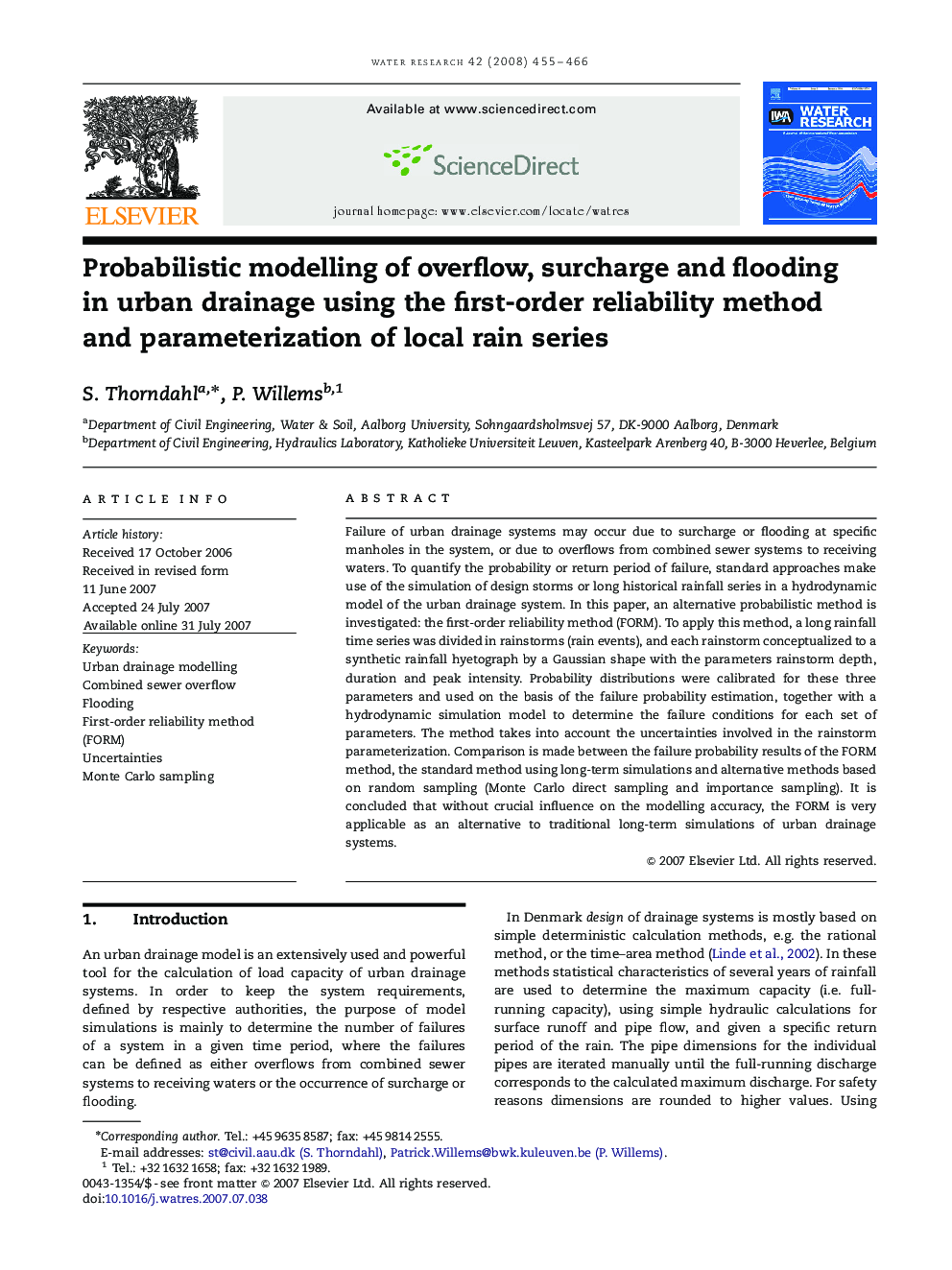| Article ID | Journal | Published Year | Pages | File Type |
|---|---|---|---|---|
| 4485780 | Water Research | 2008 | 12 Pages |
Failure of urban drainage systems may occur due to surcharge or flooding at specific manholes in the system, or due to overflows from combined sewer systems to receiving waters. To quantify the probability or return period of failure, standard approaches make use of the simulation of design storms or long historical rainfall series in a hydrodynamic model of the urban drainage system. In this paper, an alternative probabilistic method is investigated: the first-order reliability method (FORM). To apply this method, a long rainfall time series was divided in rainstorms (rain events), and each rainstorm conceptualized to a synthetic rainfall hyetograph by a Gaussian shape with the parameters rainstorm depth, duration and peak intensity. Probability distributions were calibrated for these three parameters and used on the basis of the failure probability estimation, together with a hydrodynamic simulation model to determine the failure conditions for each set of parameters. The method takes into account the uncertainties involved in the rainstorm parameterization. Comparison is made between the failure probability results of the FORM method, the standard method using long-term simulations and alternative methods based on random sampling (Monte Carlo direct sampling and importance sampling). It is concluded that without crucial influence on the modelling accuracy, the FORM is very applicable as an alternative to traditional long-term simulations of urban drainage systems.
